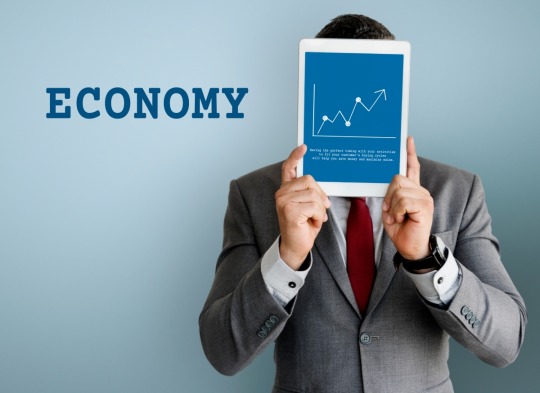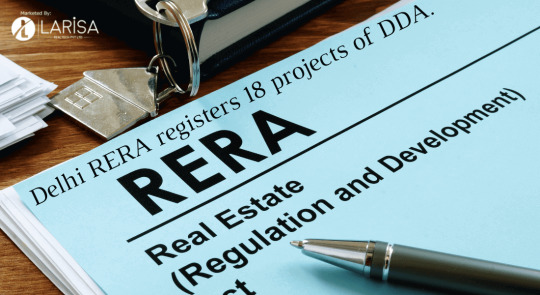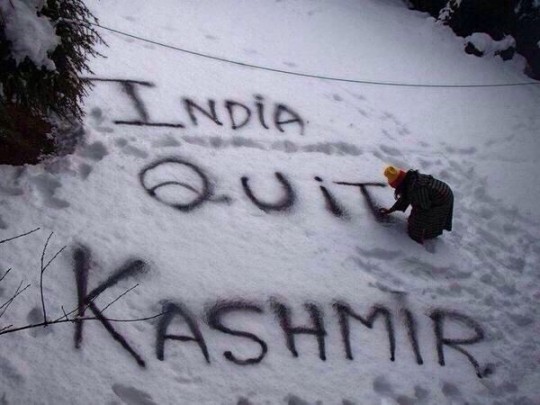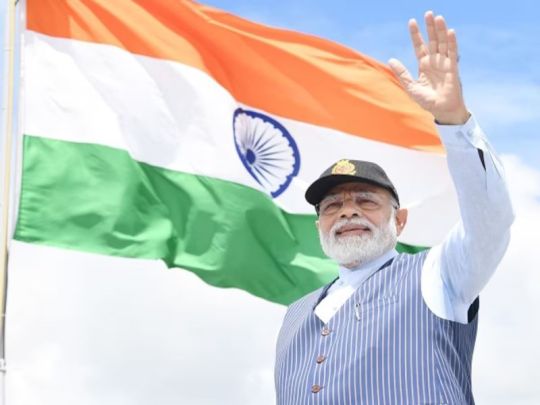#indian gdp
Text
மத நல்லிணக்கத்தைப் பொறுத்தது நாட்டின் பொருளாதாரம்; ஜிடிபி அனைத்தையும் உள்ளடக்கியதாக இருக்க வேண்டும்!
ஜி. கார்ல் மார்க்ஸ்
“ரஷ்யா உக்ரைனை ஆக்கிரமித்திருக்கிறது, இப்படியான சூழலில் நீங்கள் ரஷ்யாவிலிருந்து கச்சா எண்ணெய் வாங்குவது போருக்கு உதவுவது ஆகாதா” என்று நமது வெளியுறவுத் துறை மந்திரி ஜெய்ஷங்கரிடம் மேற்கத்திய நிருபர்கள் கேள்வி கேட்டார்கள். “மேற்கத்திய நாடுகள் ரஷ்யாவிடம் இருந்து எரிவாயு வாங்குகிறார்கள் அதை விட நாங்கள் வாங்கும் எண்ணெய் குறைவுதான்,நான் என்ன வாங்க வேண்டும், எப்படி வாங்க வேண்டும்…

View On WordPress
#கருத்து#gdp#gdp growth#gdp growth rate#gdp india#gdp india news#gdp rate#india gdp#india gdp 2023#india gdp growth#india gdp growth 2023#india&039;s gdp#india&039;s gdp growth#india’s gdp growth#indian gdp#indian gdp growth#indias gdp growth#modi#modi gdp#modi govt#modi on gdp#modi sarkar#morgan stanley on india gdp#narendra modi#pm modi#pm modi report#pm modi speech#pm modi us visit#pm narendra modi
0 notes
Text
India’s GDP Growth Likely to Moderate to 6.3% in FY24: World Bank Report
0 notes
Link
#indian gdp#indian economy#digitalization#growth#siddharth mehta IL&FS#IL&FS#Digital India#tumpik#tumblr#tumbir#tumral
0 notes
Text

UN Report Projects India’s GDP to Remain Strong at 5.8%
India’s GDP is projected to moderate to 5.8% in 2023 as higher interest rates and global economic slowdown weigh on investment and exports, the United Nations said on Wednesday, noting that the country’s economic growth is expected to remain strong even as prospects for other South Asian nations are more challenging.
The World Economic Situation and Prospects 2023 report state that world output growth is projected to decline from an estimated 3% in 2022 to 1.9% in 2023, marking one of the lowest growth rates in recent decades. The report, produced by the United Nations Department of Economic and Social Affairs (UN DESA), said that in South Asia, the economic outlook has significantly deteriorated due to high food and energy prices, monetary tightening, and fiscal vulnerabilities. Average GDP growth is projected to moderate from 5.6% in 2022 to 4.8 % in 2023.
0 notes
Text

India's GDP Growth rate 2022
According to the United Nations Conference on Trade and Development (UNCTAD), India’s Gross Domestic Product (GDP) increased by 8.7% in FY22, making it one of the fastest-growing economies in the world.
India’s growing economy attracts foreign investment and is a lucrative destination for foreign investors and startups. According to OECD estimates, India’s GDP increased by 0.8% in the 1st quarter of 2022 over the previous quarter.
Click here to read more
0 notes
Text
Delhi RERA registers 18 projects of DDA.

2021 was the month in which the Real Estate Regulatory Authority (RERA) demanded that the Delhi Development Authority ( DDA) join obligations to safeguard homeowners' rights.
However, the DDA recognized an appeal on the matter.
While hearings were taking place during the hearing and continued, the DDA was approved in July. It included the details of the ventures as well as the RERA, which issued enrollment declarations.
RERA of Delhi has registered 18 companies that belong to the Delhi Development Authority (DDA) and has settled the dispute between two experts over the registration of ventures with the DDA as a public authority.
"There are 14 reports. This will get straight forwardness the housing market and different offices, for example, Delhi State Industrial and Infrastructure Development Corporation Ltd will be urged to enroll with the power," stated DDA Director Anand Kumar. Read more
#larisa#larisarealtech#realestate#ready to move flats#latest news#delhi news#delhi government#jungkook day#ganeshchaturthi#jantakeaawaz#indian gdp
0 notes
Text
Context: Indian government has decided to begin weather forecasts for regions under Pakistan-occupied Kashmir (PoK) — Gilgit-Baltistan, Muzaffarabad and Mirpur.
After DD and AIR started airing weather forecasts from PoK regions, In return Radio Pakistan also featured updates from Srinagar, Pulwama and Ladakh.
What’s the issue?
The ‘weather war’ — a diplomatic move by India — started after Pakistan’s Supreme Court issued notices to the advocate general of Gilgit-Baltistan in late April, directing them to amend the Gilgit-Baltistan Order-2018 and establish a caretaker government there.
About PoK:
Pakistan Occupied Kashmir (PoK) is that part of the Jammu and Kashmir (India) which was invaded by Pakistan in 1947. The region is referred by the United Nations and other international organizations, as ‘Pakistani-controlled Kashmir’ (or Pakistan Administered Kashmir) and it was re-named as ‘Pakistan occupied Jammu-Kashmir’ by the Modi government.
PoK divided into two parts:
Azad Jammu and Kashmir (AJK)
Gilgit-Baltistan (referred to as the ‘Northern Areas’ till August 2009).
What is the root of the fight between India and Pakistan?
The fact that PoK is an integral part of India has been our consistent policy ever since 1947.
In 1947, Pakistan’s Pashtoon tribals attacked Jammu and Kashmir.
So to tackle this critical situation the Ruler of that time Maharaja Hari Singh of Jammu and Kashmir sought military assistance from the Indian government and the then Indian Governor General Mountbatten signed an agreement on 26 October 1947 in which three subjects Defense, Foreign Affairs and Communications were handed over to India.
Except these subjects Jammu and Kashmir was free to all its decisions.
On the basis of this accession of treaty, the Government of India claims that India has the full right to interfere in the matters related to Jammu and Kashmir. Pakistan on the other hand doesn’t agree with India.
Why is PoK important?
Because of its location, PoK is of immense strategic importance. It shares borders with several countries – the Punjab and North-West Frontier Province provinces (now called Khyber-Pakhthunkhwa) in Pakistan to the west, the Wakhan Corridor of Afghanistan in the north-west, Xinjiang province of the People’s Republic of China to the north and India’s Jammu and Kashmir to the east.
Challenges for India in PoK region:
Terrorist infiltration through the region is high.
Pakistan has changed the demography of PoK over a period of time.
It has settled ex- servicemen, Punjabi’s and Pathans so the original colours of PoK has changed.
Gilgit Baltistan region is easy as compared to other.

#india gdp latest news#indian#tumblog#tumbloadr#illustrators on tumblr#illustration#dailymail#lgbtq#news#world news#pok#pakistan#economy#viral stories#february 2023
3 notes
·
View notes
Text
Nirmala Sitharaman's prediction for India's economy as IMF cuts global growth
Nirmala Sitharaman said growth will be among the top priorities of the Narendra Modi government and attention will be paid to sustaining the momentum that the Indian economy has got coming out of the Covid-19 pandemic.
Union finance minister Nirmala Sitharaman, who is in the US to attend the annual meetings of the International Monetary Fund (IMF) and the World Bank, on Tuesday forecasted India’s growth rate to be around 7 per cent this financial year.
Sitharaman said growth will be among the top priorities of the Narendra Modi government and attention will be paid to sustaining the momentum that the Indian economy has got coming out of the Covid-19 pandemic.
Her statement comes even as the IMF, in its latest projection, predicted India’s GDP growth to be 6.8 per cent — down from a January projection of 8.2 per cent and in July estimate of 7.4 per cent. However, despite the slowdown, India would remain the fastest-growing major economy.
The IMF said on Tuesday global growth is expected to slow further next year, downgrading its forecasts as countries grapple with the fallout from Russia’s invasion of Ukraine, spiraling cost-of-living and economic downturns.

The world economy has been dealt multiple blows, with the war in Ukraine driving up food and energy prices following the coronavirus outbreak, while soaring costs and rising interest rates threaten to reverberate around the globe.
“I am aware that growth forecasts around the world are being revised lower. We expect India’s growth rate to be around 7 per cent this financial year. More importantly, I am confident of India’s relative and absolute growth performance in the rest of the decade,” she said addressing a gathering in Washington.
Sitharaman, however, observed that the Indian economy is not exempt from the impact of the world economy. “No economy is,” she said.
“After the unprecedented shock of the pandemic, came the conflict in Europe with its implications for energy, fertiliser and food prices. Now, synchronised global monetary policy is tightening in its wake. So, naturally, growth projections have been revised lower for many countries, including India. This triple shock has made growth and inflation a double-edged sword,” Sitharaman said.
After the Russia-Ukraine conflict started in February 2022, there was a sharp increase in food and energy prices. India had to ensure that the rising cost of living did not lead to lower consumption through erosion of purchasing power.
“We addressed these multiple and complex challenges through a variety of interventions. One, India ramped up its vaccine production and vaccination. India has administered over 2 billion doses of vaccine produced domestically. Two, India’s digital infrastructure ensured the delivery of targeted relief Third, in 2022, after the conflict erupted in Europe, we ensured adequate availability of food and fuel domestically, lowered import duties on edible oil and cut excise duties on petrol and diesel. The central bank has acted swiftly to ensure that inflation did not get out of hand and that currency depreciation was neither rapid nor significant enough to lead to a loss of confidence,” the minister said.
Sitharaman said India is discussing with different countries to make Rupay acceptable in their nations.
“Not just that, the UPI (Unified Payments Interface), the BHIM app, and NCPI (the National Payments Corporation of India) are all now being worked in such a way that their systems in their respective country, however, robust or otherwise can talk to our system and the inter-operability itself will give strength for Indians expertise in those countries,” she said.
2 notes
·
View notes
Note
It is currently 11:22pm and im thinking about indian economy
It'll crash........your brain. Go sleep
#Indian economy is trash i realised that when i studied gdp in 10th#and also it'll take more than 100 years to get india into the list of developed countries#indipendense day in 3 days JAI HIND I LOVE MY COUNTRY MERA BHARAT MAHAN#did i soell independent correctly
1 note
·
View note
Text
Moody's Analytics Outlook: India's Economy Expected to Grow by 6.1% in 2024
Moody's Analytics predicts that India's economy will grow by 6.1% in 2024, which is lower than the 7.7% growth seen in 2023. The country's output is still 4% below where it would have been without the COVID-19 pandemic and its effects, such as supply chain issues and international conflicts.
The report, titled ‘APAC Outlook: Listening Through the Noise,’ states that the Asia Pacific region is performing better than other parts of the world, with an expected growth of 3.8% in 2024 compared to 2.5% for the global economy.
India and Southeast Asia have experienced significant output losses due to the pandemic and are just starting to recover. Inflation in India is around 5%, close to the upper limit of the Reserve Bank of India's target range of 2 to 6%, and there is no clear indication that price pressures are easing.
The Reserve Bank of India has said that uncertainties in food prices continue to affect inflation, and it has maintained its projection of 4.5% retail inflation for the fiscal year 2024-25. Geopolitical tensions could also increase commodity prices and disrupt supply chains. The RBI predicts inflation of 4.9% in the June quarter and 3.8% in the September quarter. For the December and March quarters, inflation is expected to be 4.6% and 4.7%, respectively.
0 notes
Text
American Investors embrace a less-democratic India
A popular opposition figure is in prison. Another major party’s election funds have been seized. As India, the world’s largest democracy, gears up for elections in less than two weeks, investors from the world’s oldest democracy are embracing it like never before.
A popular opposition figure is in prison. Another major party’s election funds have been seized. As India, the world’s largest…
View On WordPress
#american investors#Congress Party#democracy in india#democratic recession#FDI#freedom house#General elections#india gdp#Indian democracy#Indian economy#indian national congress#Lok Sabha elections#Lok Sabha polls 2024#opposition parties#prime minister narendra modi#us investments in india#us investors
0 notes
Text
Economic Issues
India has one of the world's fastest-developing economies. It belongs to the group of developing nations that continually seek to strengthen their economic conditions. The enormous population of India presents a lot of difficulties that must be resolved for it to keep expanding. Yet, India confronts several economic issues, which we will address in this blog post. We'll talk about the main issues and toughest obstacles the Indian economy faces.
What are economic issues?
Economic issues refer to any difficulty in the economy that is concerned with the production of goods and services to meet the economy's endless desires through the use of scarce resources. In other words, a choice-making issue brought on by a lack of resources is typically referred to as an economic difficulty. It develops because humans have limitless demands but only a few ways to satisfy them.
Central problems of an economy
The production, distribution, and exchange of goods and services are the three core issues of an economy. Let's look at these issues: what to produce, how to produce, and for whom to produce. Doing so will help us identify the demands of society.
(I) What to produce?
This issue entails deciding which products should be created as well as how much of each product should be produced.
A nation must choose what types of commodities and services to produce as it has limited resources and cannot produce all goods.
For instance, if a farmer only has one plot of land available for farming, he must decide between growing wheat or rice.
(II) How to produce?
This problem determines which production method to use in the creation of the chosen goods and services.
There are primarily two production methods. Which are:
1) Capital-intensive approach (more reliance on machines)
2) Labor-intensive approach (more labor is employed)
Capital-intensive techniques encourage efficiency and expansion, whereas labor-intensive techniques generate employment.
To enhance your knowledge, please visit Daily Booster Article| study24hr.com
(III) For whom to produce?
This topic is concerned with determining the types of people who will consume the goods, i.e., to produce goods for the rich or the poor.
Society is unable to fulfill everyone's needs. Hence, it must decide how much of the entire output of commodities and services should go to whom.
Furthermore, society must decide whether to produce luxury items or everyday goods. This distribution or ratio is closely related to the economy's purchasing power.
Causes of economic issues
Some of the primary causes of economic problems are listed below:
1. Endless human desires
Human beings have limitless wants and needs, so they can never be satisfied. A person will experience new cravings once their initial need has been met. Because of the limited resources available, the unending number of people's needs continues to grow.
2. Unavailability of resources
Resources like labor, land, and capital are not enough to meet demand. As a result, the economy is unable to satisfy everyone's needs.
3. Other uses
Due to a lack of resources, the same resources are employed for several reasons, and choosing among resources is consequently crucial. For instance, gasoline is used for running equipment, generators, and vehicles. Thus, the economy should now select one of the alternate applications.
Major challenges faced by the Indian economy
The Indian economy faces several ups and downs due to the following reasons:
1. Unemployment
Unemployment reflects the health of the economy. It is a condition in which an individual actively seeks employment but is unable to obtain work. Workers who are unemployed experience financial hardship, which harms their families, relationships, and communities. However, the level of poverty may rise as a result of little or no income, which would slow down economic development and progress.
2. Poor education
Many children in India are unable to receive a proper education because of poverty, unstable finances, or other resource shortages. Due to their lack of skills and intellectual capacity, these kids find it difficult to fit into social situations. As a result, they are unable to participate in the same activities as educated people due to the lack of resources that education generates.
Explore ”Study24hr.com” if you're looking for an online instructional resource. It is an incredible online learning environment that seeks to improve students' academic performance and understanding abilities. Learners can access a variety of study materials, such as mock test papers, daily boosters, academic notes, and tutorial videos, with the help of this wonderful site, making it easier for them to prepare for their exams. Additionally, ”Study24hr.com” allows educators to publish their notes on its website, generating qualified leads.
3. Population density
The population density of India is among the greatest in the world. The major issue that the Indian economy faces is this population density combined with an infrastructure that cannot keep up with the population expansion. Besides, congestion emerges as a problem with increased population densities as more people begin to dwell in an area. Problems such as packed roads and transit congestion make it difficult for people to commute by public transportation, leading to people buying more vehicles, which then leads to other problems such as traffic jams and pollution.
4. Corruption
Another significant issue that the Indian economy faces is corruption. The economy is greatly inefficient and wasteful as a result of corruption. It causes plenty of social issues. Moreover, corruption functions as an ineffective tax on businesses, ultimately driving up production costs and lowering investment returns.
Conclusion
It is acknowledged that India needs to solve several economic concerns quickly to improve its economic situation. We must acknowledge the importance of education in addressing these problems if we want to overcome them. Hence, assist India's underprivileged folks in receiving a quality education because it is the responsibility of the educated person to inform others of the value of education. Keep in mind that India can develop more as we learn more about it!
#economic issues#indian economy#poverty#challenges#unemployment#poor education#corruption#low income#job seekers#population density#society#demand#study24hr#economic growth#GDP
0 notes
Text
In India Wedding is not Meet-up Of Two soul is the boom of economy
#breaking news#latest news#world news#latest updates#trends#global news#business news#trending news#indian#india#wedding#indian wedding#indian wedding buzz#wedding night#marriage#couple#economy#gdp#indian economy
0 notes
Text

UPDATE: India will be the third-largest economy by 2027!
We aren’t saying it. J.P. Morgan is!!
Recently, James Sullivan, the MD of JP Morgan APAC Equity Research, made this forecast while also adding that India’s GDP could more than double to $7 trillion by 2030!!
He expects the contribution of the manufacturing sector to increase from 17% to 25% of India’s GDP while exports are expected to double to over $1 trillion!!
Read full: https://www.linkedin.com/posts/casakshamagarwal_india-economy-jpmorgan-activity-7120687527388196864-Fy-P?utm_source=share&utm_medium=member_desktop
Follow Jobaaj Stories (the Media arm of Jobaaj.com Group) for more.
#india#economy#jpmorgan#indian#ecnomic#trillion#third#largest#china#us#japan#germany#progress#growth#growing#gdp#business#politics#geopolitics#globalpolitics
0 notes